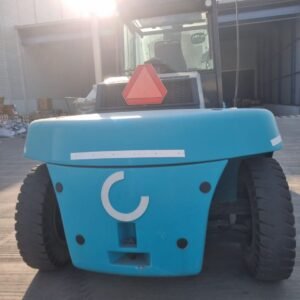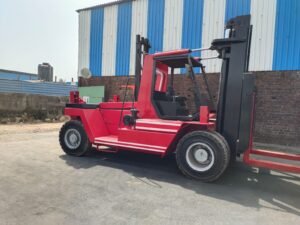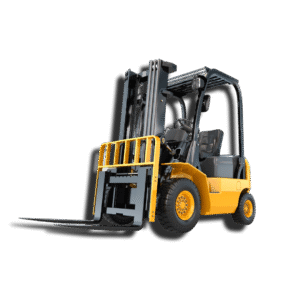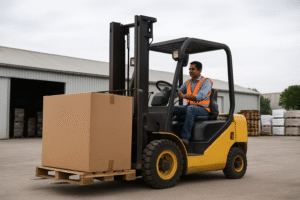Maintenance: While maintaining the forklift never ever replace parts which are not genuine or are faulty when bought.
Servicing your forklift:- While servicing your forklift few points to be remembered.
Change the engine oil and all filters this includes oil, diesel and external hydraulic filter, always use genuine engine oil with the right grade as prescribed by manufacturer. For forklifts Engine oil generally used are Grade 15W40 and Hydraulic 68No.
Change the Hydraulic oil every 3 months or until it turns greyish. In India forklift used in open are mostly victims of dust and water. Due to leakages or open cap could lead to dust accumulation and water could enter in to the Hydraulic tank during monsoon – at any point of time if you note that the oil is turned murky change immediately.
Change Transmission oil in every 3 months along with transmission filters (Best Transmission oil for forklifts are SAI 30 / Castrol) in case of fluid coupling forklifts ( manual driven forklift) just change the oil. (Use any branded 90 to 140 no gear oil)
Automatic Transmission: – What happens if a forklift’s transmission begins to fail? The engine works harder to keep going. Burning excess fuel, causing more wear & tear, and increasing the maintenance cost that’s coming up.
Manual Transmission (Also called as Fluid coupling) :- Manual transmission forklifts are mass produced by Voltas and Godrej in India, these forklifts are typically more rugged with excellent power to pull or push materials from containers and other places. This is due to heavy duty manual gears 2 for forward and 2 for reverse. In most cases in these machines if the gear fails the shift bar generally slips and does not remains on a any single gear or it may also become difficult to shift gears. In both cases you immediately consult a technician and get the problem fixed before it damages other parts of the gear.
Electric forklifts:-What happens if an electric forklift’s electricity flow gets disrupted? The forklift will typically shut down and need a quick repair.
This is just one example of the maintenance differences between forklift types. Differences which can add up to big cost savings.
Parts Replacement.
Periodically as an when servicing of the forklifts are done other parts in the machine should be also be considered and should be changed depending on the wear and tear.
1 All rubber Hoses
2 All Hydraulics seals
3 Clutch Plate
4 Pressure plate
5 Clutch Release bearings
6 Break Shoe
7 Master and wheel cylinder kits
8 All belts
9 Water pump
10 Radiator
An LPG forklift has an internal combustion engine. That means it has sparkplugs, plug wires, a distributor with a distributor cap, and oil. All of which need replacement over the life of the forklift.
Electric forklifts don’t have those parts. They have a battery and a drive motor. No radiator, no coolant hoses, and no fan belt either. Fewer parts to wear out.
We hope this information helps you save on your next forklift purchase.
Wish you Luck
Hussain Khan (Business Head)
Bharat Lifter





